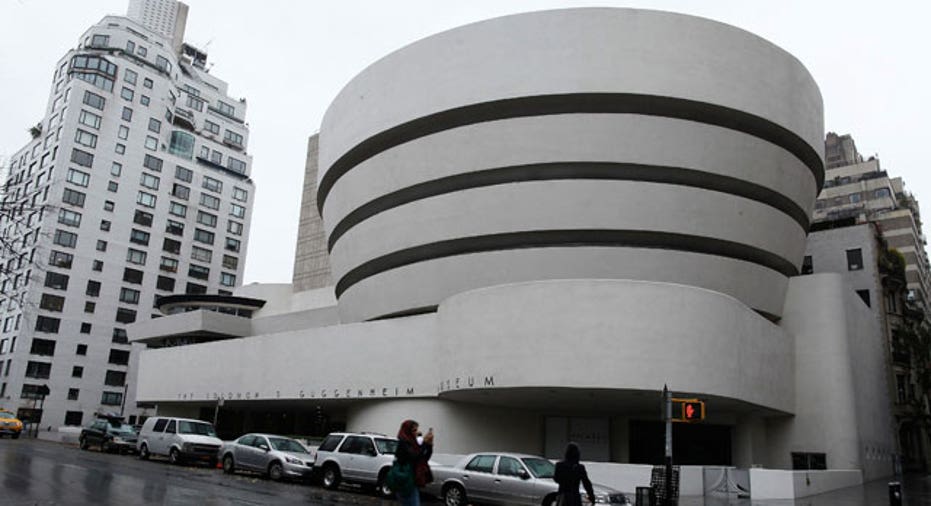What Happens When Your Van Gogh is Gone?

When you visit a museum, don't just gaze at the art on the walls. Take a good look at the guards posted in the rooms and doorways, especially their line of sight to the exhibits. Then check out the blinking cameras in the ceiling, the bolted-to-the-wall frames of the paintings and the shatterproof non-reflective casings on the statuary.
And be aware that others, less reputable than you, are doing the same thing.
The recent art theft at the Kunsthal gallery in the Netherlands shows that art thieves also know their way around a museum. And they like Impressionist paintings. These thieves stole two Monets, a Matisse, and a Gauguin, as well as a Picasso. And all in the five minutes before a "state of the art" (no pun intended) alarm alerted the police, who arrived within five minutes.
'Museum of the Missing'
These paintings now belong to the "Museum of the Missing," as one book on the subject describes it, which currently includes 340,000 art objects, according to the Art Loss Register. The "missing" collection also has five Rembrandts.
The paintings removed from the Kunsthal are from the private collection of multimillionaire Willem Cordia, whose family expressed "shock." Which leads us to ask: Why do wealthy collectors lend their artwork to museums and galleries when they risk losing their prized possessions?
Not nailed down
More wealthy people than ever are collecting art. In uncertain times, classic art is a certainty. Auction houses such as Christie's saw art sales soar 200-fold in recent years. And this year when Sotheby's auctioned off Edvard Munch's painting "The Scream," the selling price was a record $120 million. Incidentally, two versions of "The Scream" have already been stolen, with only one recovered.
"The recovery rate for stolen art is minimal," says a study in the Suffolk Transnational Law Journal, at least in the short term.
So those who own a valued piece of art should always have it insured. Insurers such as Chubb and Travelers handle specialty policies like this.
Their first step is to have an independent appraiser check its value and make sure it was not already stolen by checking the art registry. This is particularly true for art that may have passed through Europe during World War II, when light-fingered Nazis were stealing anything not nailed down.
Then the insurance company will examine home security to make sure there are alarms and protective devices to keep it dry and secure.
The Kentucky Derby
But most art collectors aren't satisfied with just hanging their Jackson Pollock on the wall. They want it displayed publicly, even at the risk of losing it. Why?
"Collectors lend to galleries because they like to share," says Andrew Gristina, who heads the Travelers Fine Art Practice. "Some feel it's their duty."
But there are other reasons, such as bragging rights. Like the owner of a Kentucky Derby winning racehorse, it's an honor to have an exhibit with your name on it.
And it can be profitable, too. As Dorit Straus, worldwide specialty fine art manager for Chubb Corp., points out, "an exhibition can help someone 'arrive.'" If artists become famous, their work is worth a lot more after a big showing by their owners. A lucky owner could find himself with the next "Scream."
Kidnappers and keepers
Thieves make it their business to know what art is worth, and are more than willing to rip it off walls. Some of it winds up in China, but there's also a thriving market for stolen paintings in Eastern Europe.
Some thieves are kidnappers. After all, a piece of art tells no tales after it's ransomed. Insurers say they don't pay kidnappers directly, and countries like Great Britain have specific laws against paying a ransom for stolen art. But no one denies that it happens in convoluted ways, such as providing a reward for a middleman who intercedes to have it returned.
Then there are "keepers," people who wind up with an Andy Warhol in their basement next to "Dogs Playing Cards" or, worse yet, tucked, like the portrait of Dorian Gray, into the rafters of an attic, perhaps for a generation. "Thieves may sit on it, but then someone dies, the heirs don't know the painting's value, and it goes up for sale," says Gristina. The Art Loss Register becomes aware of it, and it is returned.
Putting a price on it
But you wouldn't want to wait until you're old and gray to get back your masterpiece. Insurers say that if you do lend out artwork, here's what you should do:
- Review the museum's offer. Exhibitions are often planned years in advance. Is it a "traveling" exhibition that moves to multiple locations, thus creating additional opportunities for damage or theft as the art is boxed and unboxed?
- Talk to your insurance agent or broker. "We can review our contract as well as your agreement with the museum and the museum's own policy for covered perils," says Chubb's Straus. Insurers themselves have "flying squads" that investigate these thefts.
- The museum is generally responsible for your art once it leaves your door. But your insurer will likely insist on a loan agreement that covers every possibility.
- Your insurer will also look at the "facilities report," which describes in detail what kinds of security the museum or gallery is offering.
"Museums are wonderful places," says Straus, "but they're not cookie cutter." Some skimp on security, she says, particularly overseas.
Insurers say the theft from the Kunsthal will likely cost that private gallery, and its insurer, a lot of money. As for the owners, no amount of money can replace their stolen objects. "I've never met anyone who'd rather not have the art back," says Gristina.
The original article can be found at Insure.com:What happens when your Van Gogh is gone?